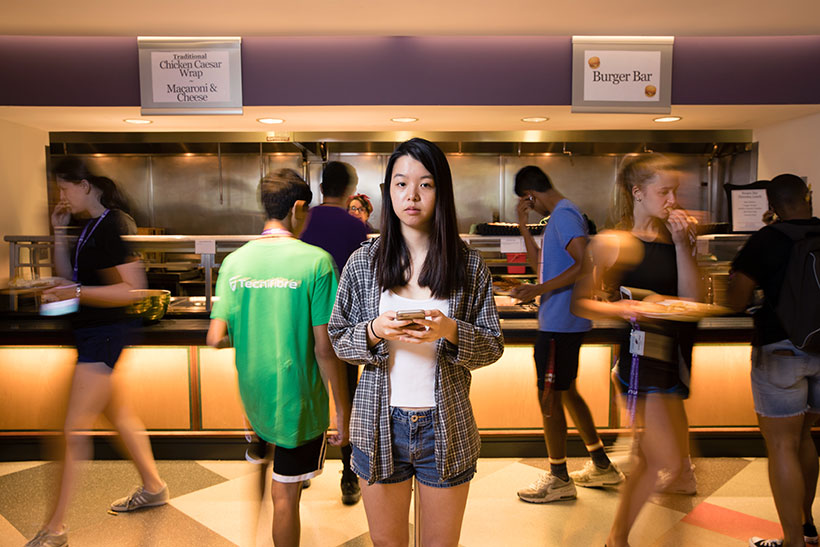
No one likes to wait.
Yet we have to do it all the time—at the grocery store, at Disney, at the DMV. In fact, studies calculate that a typical person, over a lifetime, spends up to five years just waiting in line.
That’s why computer science major Jane Kim ’20 devoted her summer to studying lines—specifically, the ones that keep her from lunch. She spent June and July line-watching in Valentine Dining Hall and data-crunching in the computer lab, testing a hypothesis about how to get people to their food more quickly.
Even in summer, Valentine offers a wide selection at multiple stations. Kim used her phone to take notes on how long it took people to come away from the lunch line with a meal. She limited her readings to the main stations offering multiple hot entrées, counting the number of people who chose each main course.
Kim’s mentor was Assistant Professor of Computer Science Kristen Gardner ’12, who studies queuing theory, and who also advised Crystal (Yujing) Zhou ’21 this summer. Zhou focused on amusement parks, studying “virtual queuing,” in which thrill seekers get a phone alert when it’s their turn to ride, so they can explore the park instead of waiting in line.
Kim and Zhou did this work with the help of a Summer Science Undergraduate Research Fellowship, which, together with the Gregory S. Call Undergraduate Research Program, provided College stipends for 134 student researchers this summer. Each received $440 per week plus on-campus housing.
Elijah Koome ’19, for example, pored over testimonies on the 2007–08 post-election crisis in Kenya. Fernando Garcia Toro ’20 used data sets to search for planets outside our solar system. And Shashank Sule ’20 studied Toric rings—sets of multivariate polynomials that are important in commutative algebra.
By August, Kim had learned that fewer choices on each line would decrease the mean wait time by 39 percent. For Director of Dining Services Joe Flueckiger, this is welcome data, although he has to think about the big operational picture—as Kim realizes.
“There are several limitations to my results,” Kim says, “one being that my implementation does not consider that the dining hall has nights with more than two main entrées. However, this is a good first step in being able to add more layers to my model.”
For those improved simulations... we’ll just have to wait.